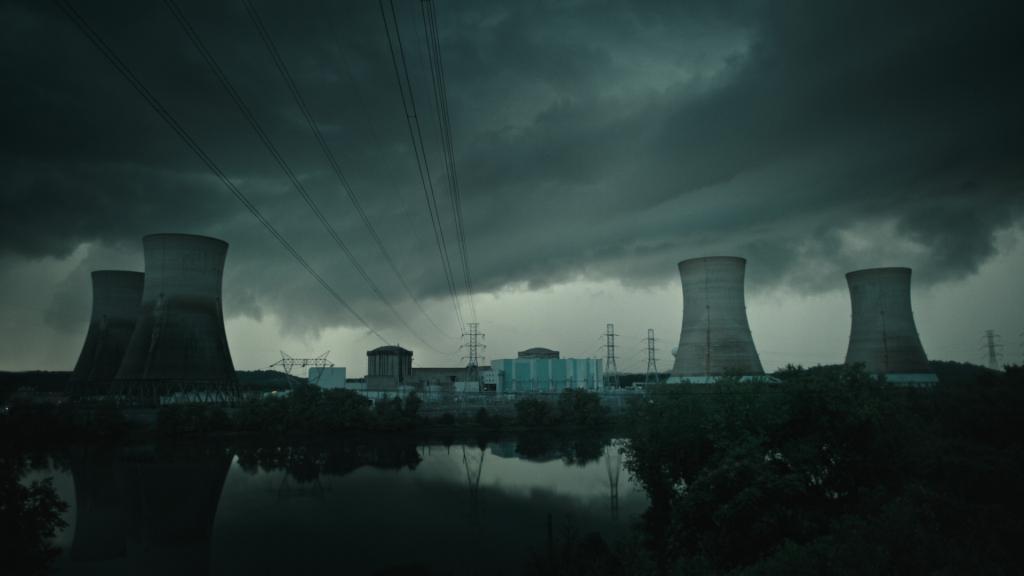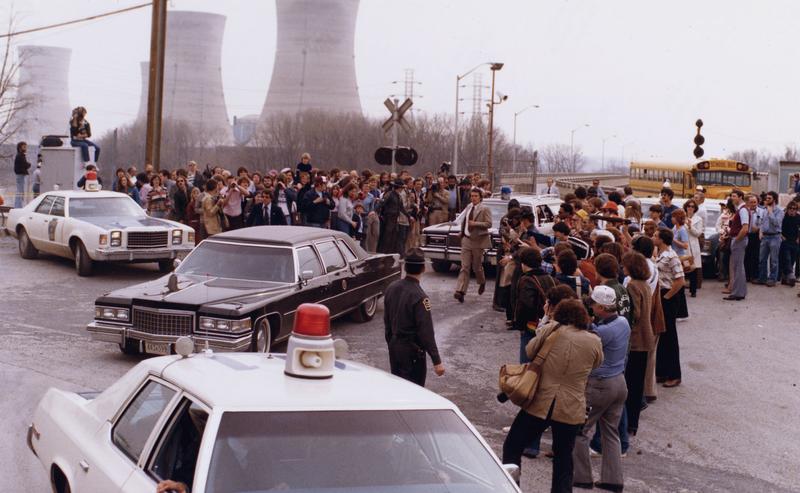The Three Mile Island nuclear plant was built in 1974 on Pennsylvania’s Susquehanna River near the capital city Harrisburg. It was built at a time when atomic energy was seen as the answer to America’s growing reliance on oil from foreign nations. The plant had two reactors. About 4 a.m. on March 28th, 1979, unit 2 nuclear reactor (TMI-2) all alarms was set ablaze. A series of cascading failures and errors led to partial meltdown and triggered the fears of a major catastrophe. Though major disasters were averted, it was the most serious accident in U.S. commercial nuclear power plant operations.
Real Life Reflecting the Reel Life?
On March 16, 1979 James Bridge’s The China Syndrome starring Jane Fonda, Michael Douglas, and Jack Lemmon released in the US soil. The film revolves around an investigative reporter who stumbles upon a cover-up of an accident at a nuclear power plant. The film’s title refers to the hypothetical meltdown scenario where the core melts through its containment structure and tunnel its way deep into the earth to reach the other side (allegedly ‘China’).
Cascading series of mechanical failures could be averted by the technology in place. Alas, in a capitalist society that encourages corner-cutting and in a tense scenario that involves flesh-and-blood humans, state-of-the-art technologies aren’t enough to avert disasters. This was the core argument of James Bridges’ The China Syndrome, and it was proved to be true in the aftermath of TMI-2 accident in Three Mile Island. As the nuclear physicist Michiko Kaku states, “the film brought into the vernacular the concept of core meltdown.”
Related to Meltdown: Three Mile Island – Chernobyl: Men of Steel (2022) Documentary Review: A Heart-rending Aftermath Documentation of a Cataclysmic Explosion
Nightmarish Scenario and the Fear of Radiation
As with any Netflix limited docu-series, Meltdown: Three Mile Island rounds up an ensemble of interviewees who either come across as heroic or villainous. But before we are pushed to categorize in such a manner, director Kief Davidson details the sequences of events that caused panic among the unprepared workers in the control room of the nuclear power plant. With re-enactments, he details the nightmarish scenario that caused the partial meltdown.
While the workers inside the plant were working round the clock to avert a major disaster, i.e., a core meltdown, conflicting information started floating outside the power plant. On one hand, the Met-Ed top brass alongside the Nuclear Regulatory Commission (NRC) has taken the hard official line stating that there’s no radiation and there’s no possibility of a core meltdown. On the other hand, local residents, media and public health officials were demanding for scientific data rather than the familiar corporate evasive tactics. The inspectors as well as media reports also started reporting increasing levels of radiation near TMI-2.
Residents Turned Activists
The anxieties and fears over nuclear disaster in the local Middletown community were explored through three interviewees: Paula, Joyce, and Nicole. Nicole was only six years old in March 1979 and she remembers the general sense of unrest at her school when the news of accident at the plant started pouring in. Paula introduces herself as a housewife who didn’t have any idea what a nuclear plant is before 1979. Once she had found the idea of anti-war protests in the 1960s (during Vietnam War) as despicable. In the aftermath of accident, she was in the front-lines protesting against the power plant and calling for its total shutdown.

Kief Davidson in Meltdown: Three Mile Island mentions the suspicious death of laboratory technician and nuclear facility union activist Karen Silkwood. Foul play is suspected in the deaths of multiple nuclear industry workers. Their lives were written off as collateral damage to maintain the industry’s reputation. In fact, with the help of government and law enforcement even residents turned activists like Joyce and Paula were monitored, their phone lines tapped. There’s nothing ideal about nuclear energy technology as long as it’s run with the profit-motive. The use of duct tape during the key clean-up operation in TMI-2, in an attempt to cut cost and save time by the Bechtel Corporation would baffle you. Duct tapes to manage radiation?
Related to Meltdown: Three Mile Island – 10 Distressing Films on the Potential Aftermaths of a Nuclear Holocaust
Speaking Truth to Power
Rick Parks is a chief engineer employed by Bechtel Corporation (General Public Utilities – GPU – was also involved in the clean-up task) to supervise the clean-up procedure in Three Mile Island. The clean-up operation began a year after the accident (in March 1980). By the 3rd episode, he gradually emerges as this narrative’s hero. In fact, by the end Meltdown: Three Mile Island becomes his story as well. The story he says, ‘have waited to tell for 37 years’. While a meltdown was averted in 1979, a botched cleanup could supposedly wake the nuclear giant from its slumber.
Rick Parks is not an ideologue or an activist. He believes in nuclear energy. He is also a US Navy man who admires Admiral Rickover for developing naval nuclear propulsion (known as the ‘Father of the Nuclear Navy’). But the short-cuts taken by Bechtel Corporation, further overlooked by NRC, rang the alarm bells within Rick Parks. Couple of Rick’s colleagues – who were part of the clean-up operation – were also dismayed by the corporation’s half-baked measures.
Rick relayed his findings to NRC, but it was dismissed. Soon, Rick was harassed and intimidated by the corporation to keep him from speaking out. Rick was very nervous but eventually decided to become a whistleblower despite knowing what happened to Karen Silkwood. Four days before the crane lift, Rick went to Government Accountability Project (GAP) and came up with a 53-page affidavit that was taken to Congress. Rick also met the press to submit his detailed findings. Later, NRC did ask Bechtel to do load tests on the crane. The load tests as anticipated failed numerous times.
Rick’s life was ruined in lot of ways for speaking truth to power. His suffering underlines how self-preservation is the primary aim of any commercialized industry. Human oversight, malfeasance and focus on monetary profit can be unfathomably destructive while dealing with nuclear energy. Moreover, the crane incident is not an isolated case of human oversight. By the end, we are left to ponder over the shocking news that the safety-test results in Three Mile Island power plant were falsified before the 1979 accident.
Eventually, Meltdown: Three Mile Island leaves us with the surprising fact that after the 1979 accident, only two nuclear power plants were built in the US soil. But both are not in operation due to safety concerns.
Also Read: Parallels (Season 1): Recap & Ending Explained
Final Thoughts on Meltdown: Three Mile Island
Davidson’s approach surefootedly brings together the intimately emotional as well as the sobering scientific details. He juxtaposes the micro (individual conflicts) and the macro (high-stakes political games) pretty well. Of course, the Netflix brand of re-enactments does come across as visually overwrought. At times, the re-enactment as well as the interviews has a highly dramatic tone which shamelessly tries to manipulate our emotions. Apart from that, it’s an important rendering of largely unknown chapter in the modern US history.
Overall, Meltdown: Three Mile Island offers a compelling account on the nuclear power industry and how a complex web of corporate greed can put lot of people’s lives in peril.










![Anonymously Yours [2021] Review: All Things Predictable and Sweet in this Mexican Teenage Drama](http://www.highonfilms.com/wp-content/uploads/2021/12/Anonymously-Yours_20210308-SC97-00491_R_V2-768x532.jpg)